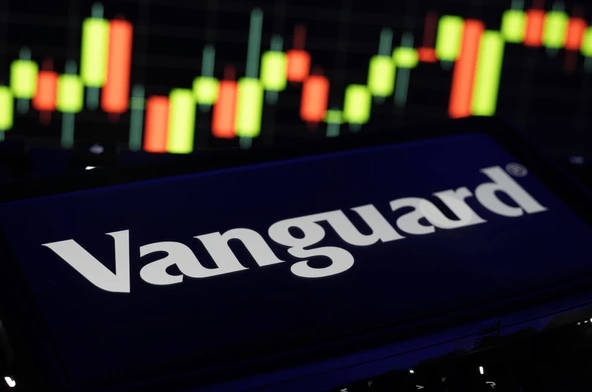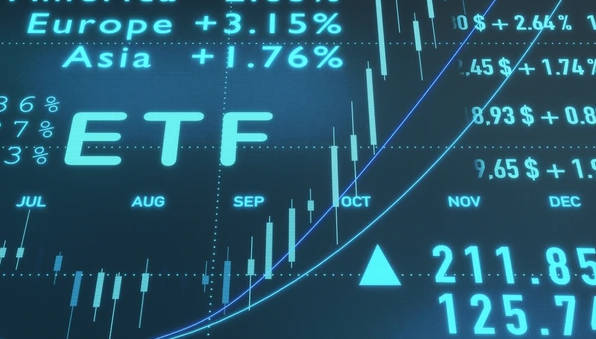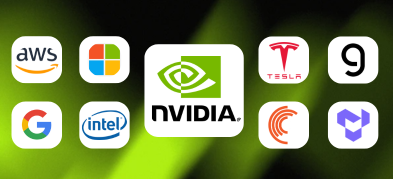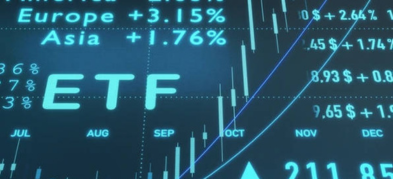
Ultima Markets App
Trade Anytime, Anywhere
Important Information
This website is managed by Ultima Markets’ international entities, and it’s important to emphasise that they are not subject to regulation by the FCA in the UK. Therefore, you must understand that you will not have the FCA’s protection when investing through this website – for example:
- You will not be guaranteed Negative Balance Protection
- You will not be protected by FCA’s leverage restrictions
- You will not have the right to settle disputes via the Financial Ombudsman Service (FOS)
- You will not be protected by Financial Services Compensation Scheme (FSCS)
- Any monies deposited will not be afforded the protection required under the FCA Client Assets Sourcebook. The level of protection for your funds will be determined by the regulations of the relevant local regulator.
Note: Ultima Markets is currently developing a dedicated website for UK clients and expects to onboard UK clients under FCA regulations in 2026.
If you would like to proceed and visit this website, you acknowledge and confirm the following:
- 1.The website is owned by Ultima Markets’ international entities and not by Ultima Markets UK Ltd, which is regulated by the FCA.
- 2.Ultima Markets Limited, or any of the Ultima Markets international entities, are neither based in the UK nor licensed by the FCA.
- 3.You are accessing the website at your own initiative and have not been solicited by Ultima Markets Limited in any way.
- 4.Investing through this website does not grant you the protections provided by the FCA.
- 5.Should you choose to invest through this website or with any of the international Ultima Markets entities, you will be subject to the rules and regulations of the relevant international regulatory authorities, not the FCA.
Ultima Markets wants to make it clear that we are duly licensed and authorised to offer the services and financial derivative products listed on our website. Individuals accessing this website and registering a trading account do so entirely of their own volition and without prior solicitation.
By confirming your decision to proceed with entering the website, you hereby affirm that this decision was solely initiated by you, and no solicitation has been made by any Ultima Markets entity.
I confirm my intention to proceed and enter this website Please direct me to the website operated by Ultima Markets , regulated by the FCA in the United KingdomIVV vs VOO: How To Choose The Right ETF
If you are searching for IVV vs VOO, you are already looking in the right place. Both are low cost S&P 500 ETFs that many investors use as the core of their portfolio. The tricky part is not “which one is good”, but “which one is better for me”.
This article walks through what they have in common, where they differ, and how to decide in a clear, step by step way.
A Comparison of IVV vs VOO
| Feature | IVV | VOO |
| Full name | iShares Core S&P 500 ETF | Vanguard S&P 500 ETF |
| Provider | BlackRock iShares | Vanguard |
| Index tracked | S&P 500 | S&P 500 |
| Inception year | 2000 | 2010 |
| Expense ratio | 0.03% | 0.03% |
| Assets under management | Hundreds of billions of USD | Hundreds of billions of USD |
| Exchange | NYSE Arca | NYSE Arca |
| Strategy | Passive S&P 500 tracking | Passive S&P 500 tracking |
At first glance, IVV and VOO look almost identical. They track the same index, cost the same each year, and invest in the same group of large US companies.
So why does the “IVV vs VOO” discussion exist at all? The answer sits in a few practical details.
What IVV and VOO Have In Common

Same index, same core exposure
Both IVV and VOO track the S&P 500 index, which covers around 500 of the largest listed US companies. That gives you instant diversification across sectors such as:
- Technology
- Health care
- Financials
- Consumer discretionary and staples
- Industrials
The top holdings in each fund are very similar and usually include names like Nvidia, Microsoft, Apple, Amazon, Alphabet, Meta, Tesla and others. If you buy IVV or VOO, you are really buying the same broad slice of the US equity market.
Very low ongoing costs
Each ETF charges an expense ratio of 0.03% a year. On a 10,000 dollar investment, that is only 3 dollars per year in management fees.
Over long periods, this low cost structure can help you keep more of your returns compared with more expensive funds.
Nearly identical performance
Because both funds:
- Track the same index
- Charge the same fee
- Hold a very similar basket of stocks
Their long term performance has been extremely close. When you look at three year, five year or ten year charts, the lines for IVV and VOO almost sit on top of each other. Short term differences can appear due to timing of dividends or index changes, but they are usually small and temporary.
Simple, passive strategies
Neither ETF is trying to beat the market through stock picking or trading. Both follow a passive index strategy, which aims to mirror the S&P 500 as closely as possible.
For many investors, that is exactly what they want from a core holding. Simple, transparent and rules based.
The Key Differences In IVV vs VOO
Even though the two funds are very similar, there are some real world differences that may influence your choice.

1. Provider and fund structure
- IVV is part of the iShares range at BlackRock, the world’s largest asset manager. It is a straightforward ETF that directly holds the S&P 500 basket.
- VOO sits inside Vanguard’s fund family. It is an ETF share class of a larger S&P 500 index fund that also offers mutual fund share classes.
This structure means Vanguard pools assets from both ETF and mutual fund investors into one portfolio. That design has helped Vanguard’s index funds build a reputation for tax efficiency in some markets, although for many long term investors the practical difference is small.
Some people simply prefer the iShares or Vanguard brand based on their existing holdings, experience with service, or how their broker integrates with each provider.
2. Fund size and liquidity
Both IVV and VOO are among the largest ETFs in the world, with assets measured in hundreds of billions of dollars.
In practice, that gives you:
- Very tight bid ask spreads
- Deep trading volume throughout the day
- Plenty of liquidity even for larger orders
Day traders and institutions might study tiny differences in spreads on their specific platform. For most individual investors, both funds are more than liquid enough, and any difference in trading experience is marginal.
3. Dividends and yield
Both ETFs pay quarterly dividends based on the cash flows from the underlying S&P 500 companies. Their dividend yields tend to sit very close to each other and to the yield of the index itself.
Occasionally you may see a small difference in the reported dividend yield between IVV and VOO in a given year, but the gap is usually minor and not consistent over time.
4. Account type and tax considerations
Tax rules depend heavily on where you live and which account you use. In some regions, things like ETF fund structure, distribution policy and local withholding tax rules can make a small difference between IVV and VOO when held in taxable accounts.
However, in tax advantaged accounts such as retirement plans, these differences often matter less than your contribution rate, asset allocation and holding period.
5. Platform features and investor experience
In the real world, many investors end up choosing IVV or VOO based on their broker, not on the fund factsheet. For example:
- Some brokers offer zero commission trading on a specific provider.
- Others allow fractional investing in certain tickers, which makes it easier to invest fixed amounts, such as 200 dollars per month.
- Automatic monthly investment plans or “portfolio builders” may support one fund by default and not the other.
If your platform makes one of these ETFs cheaper or easier to use, that convenience is a valid reason to favour it.
Practical Checklist To Choose Between IVV vs VOO
Since both ETFs are strong choices, focus on what fits you better rather than which one is “perfect”.
1. Check Your Broker Costs
- Compare trading commissions and any platform fees.
- Look at typical bid ask spreads during the hours you place orders.
- If one ETF is cheaper to buy and hold on your platform, give it priority.
2. Match The Fund To Your Investing Style
- Long term, buy and hold
Either IVV or VOO works well. Fees and index exposure are almost identical. - Frequent trading
If you trade the S&P 500 very actively or use options, you may care more about intraday liquidity and your broker’s specific conditions.
3. Consider Brand And Convenience
- Choose IVV if you prefer iShares or already hold other BlackRock ETFs.
- Choose VOO if you like Vanguard’s approach and use their funds elsewhere.
- Favour the ETF that works smoothly with features you actually use, such as fractional investing or automatic monthly contributions.
Once you decide, stay consistent. Building one position over time usually matters more than switching back and forth between two almost identical S&P 500 funds.
Alternatives For Non US Investors

If you live outside the US, you may not be able to buy IVV or VOO directly because of local rules like PRIIPs in Europe. Many investors instead use UCITS S&P 500 ETFs listed on European exchanges, such as UCITS versions of the iShares Core S&P 500 ETF or the Vanguard S&P 500 ETF.
They still track the S&P 500 and aim to provide the same low cost, broad US equity exposure. Check which S&P 500 UCITS ETFs are available and tax efficient in your own market.
IVV vs VOO Which One Should You Choose
When you strip away the ticker symbols, IVV vs VOO is really a choice between two almost interchangeable ways to own the S&P 500. Both are low cost, diversified and backed by reputable providers, so the real decision comes down to your platform costs, tax situation and personal preference for iShares or Vanguard.
Pick the one that fits your setup best, build your position gradually and stay focused on your overall plan instead of tiny differences in performance. In the long run, your discipline, contribution rate and time in the market will matter far more than which of these two excellent S&P 500 ETFs you chose.
Disclaimer: This content is provided for informational purposes only and does not constitute, and should not be construed as, financial, investment, or other professional advice. No statement or opinion contained here in should be considered a recommendation by Ultima Markets or the author regarding any specific investment product, strategy, or transaction. Readers are advised not to rely solely on this material when making investment decisions and should seek independent advice where appropriate.












